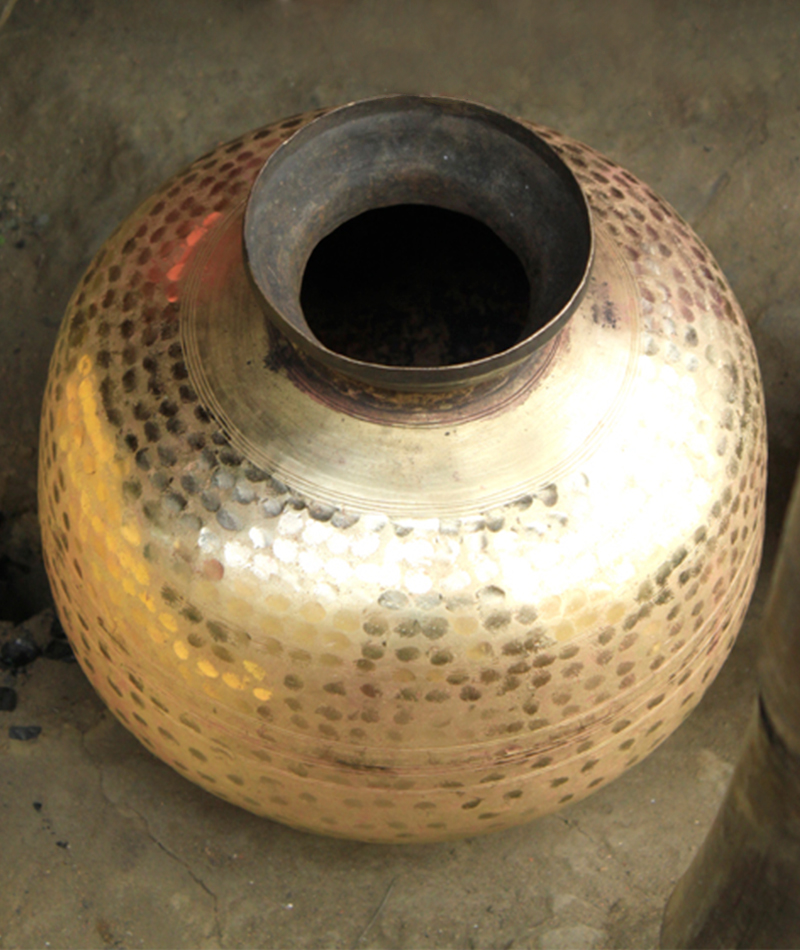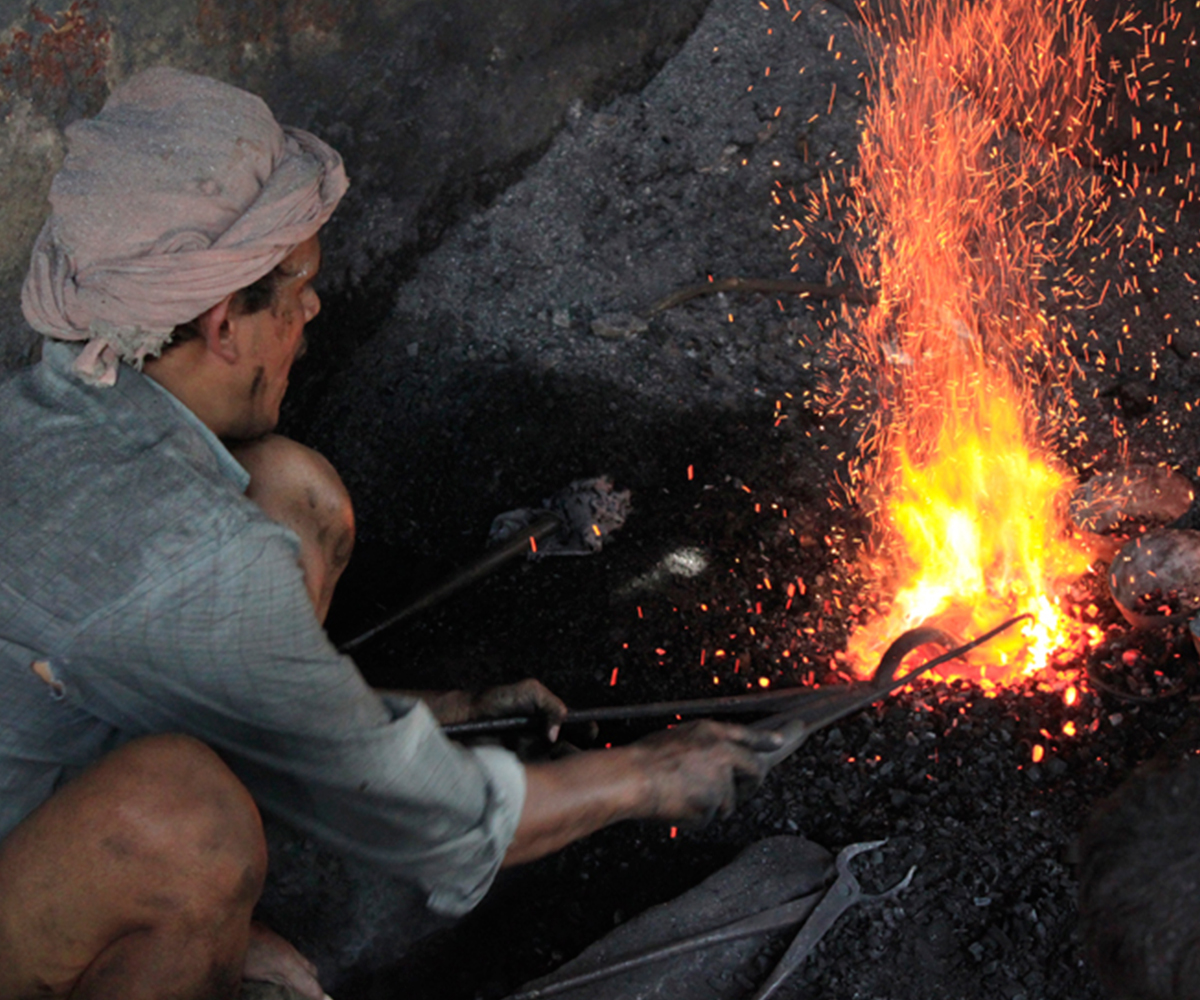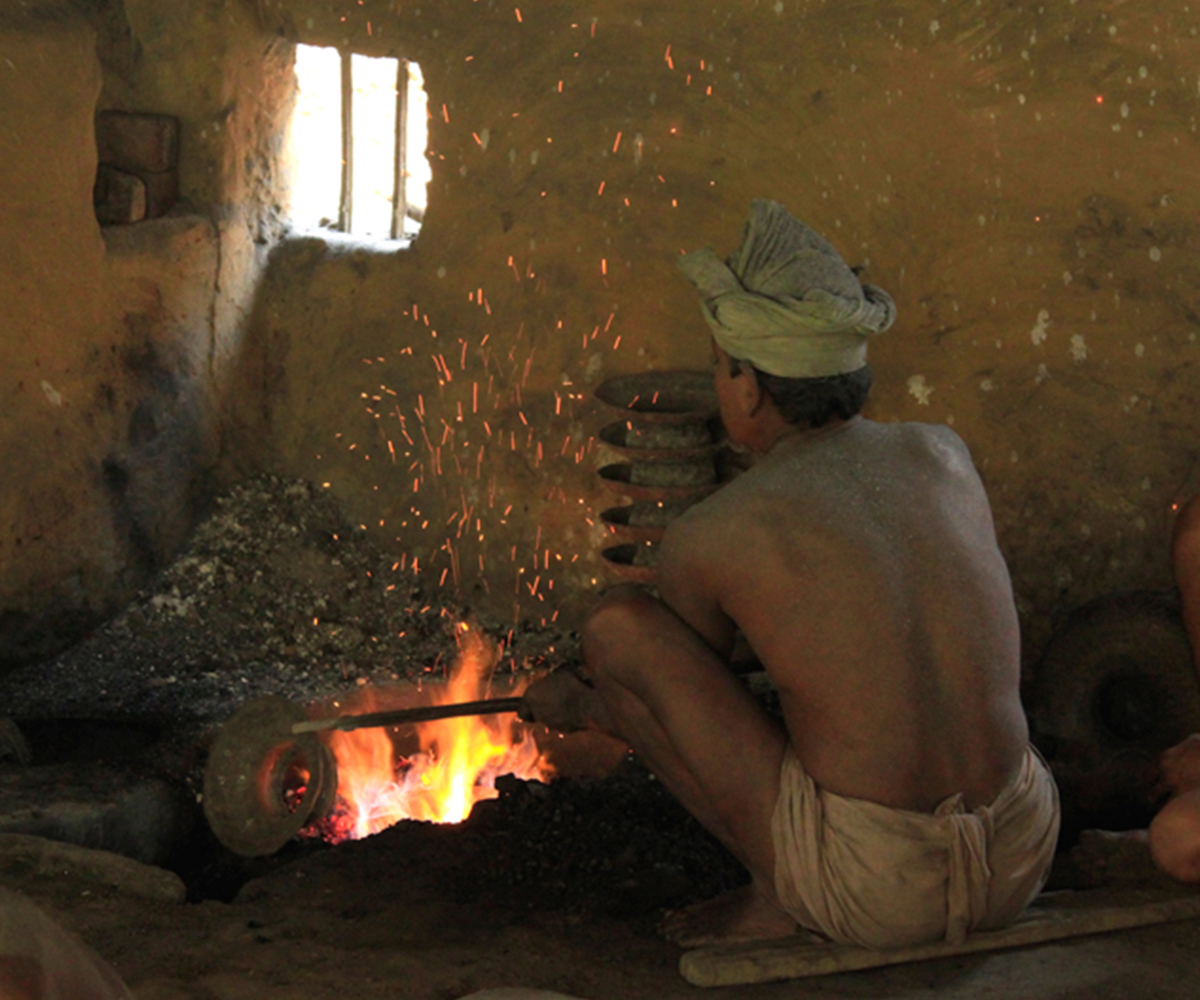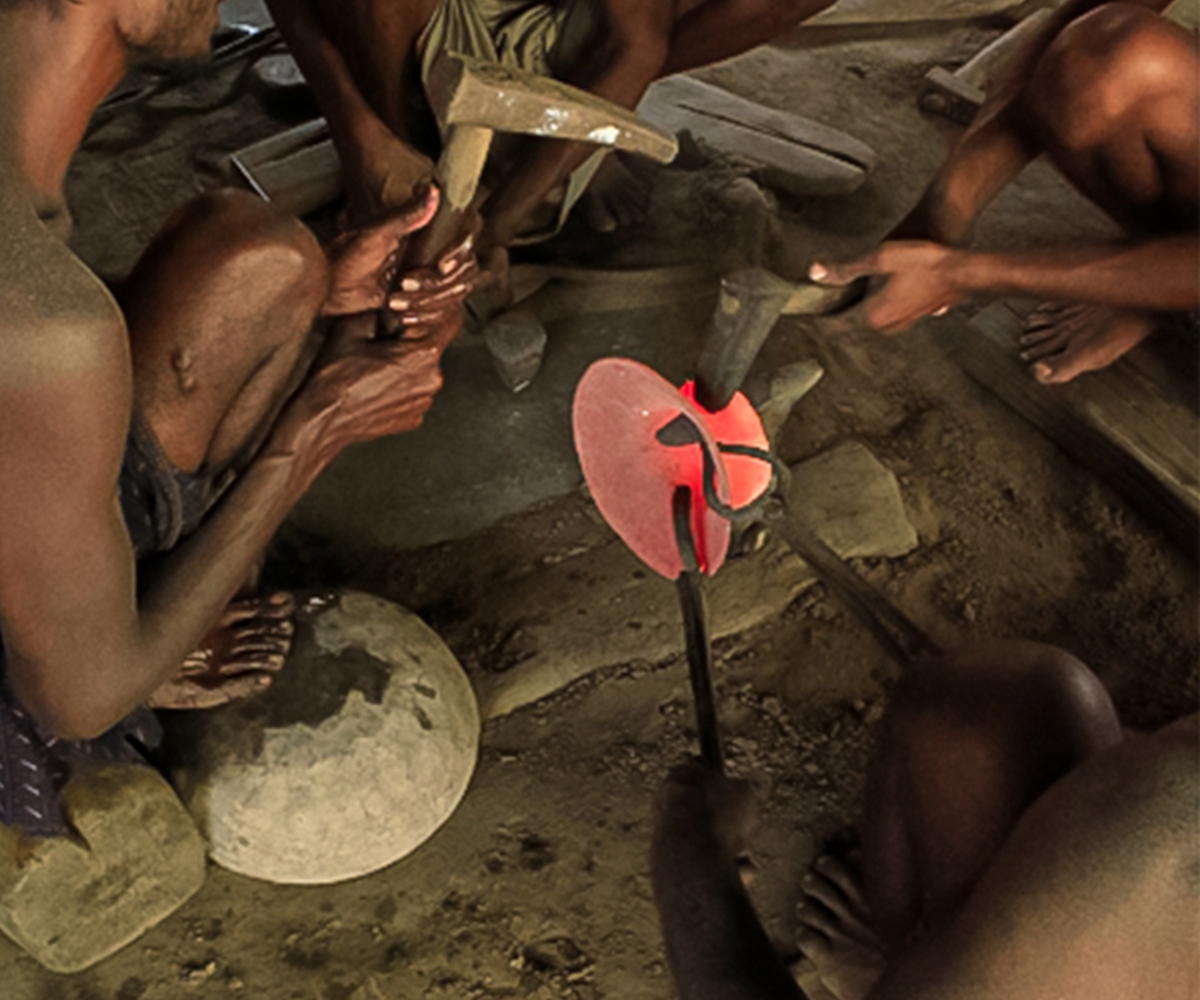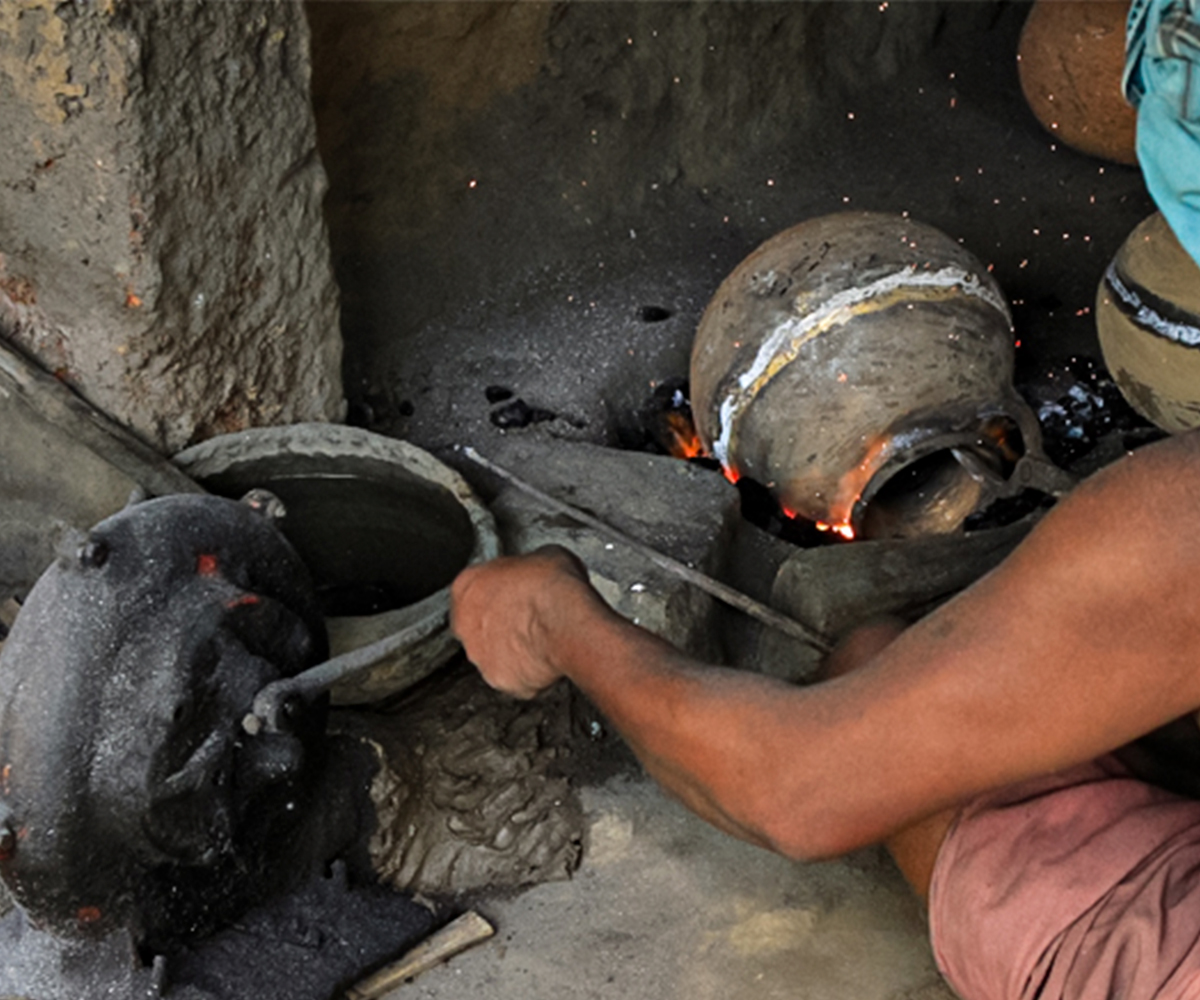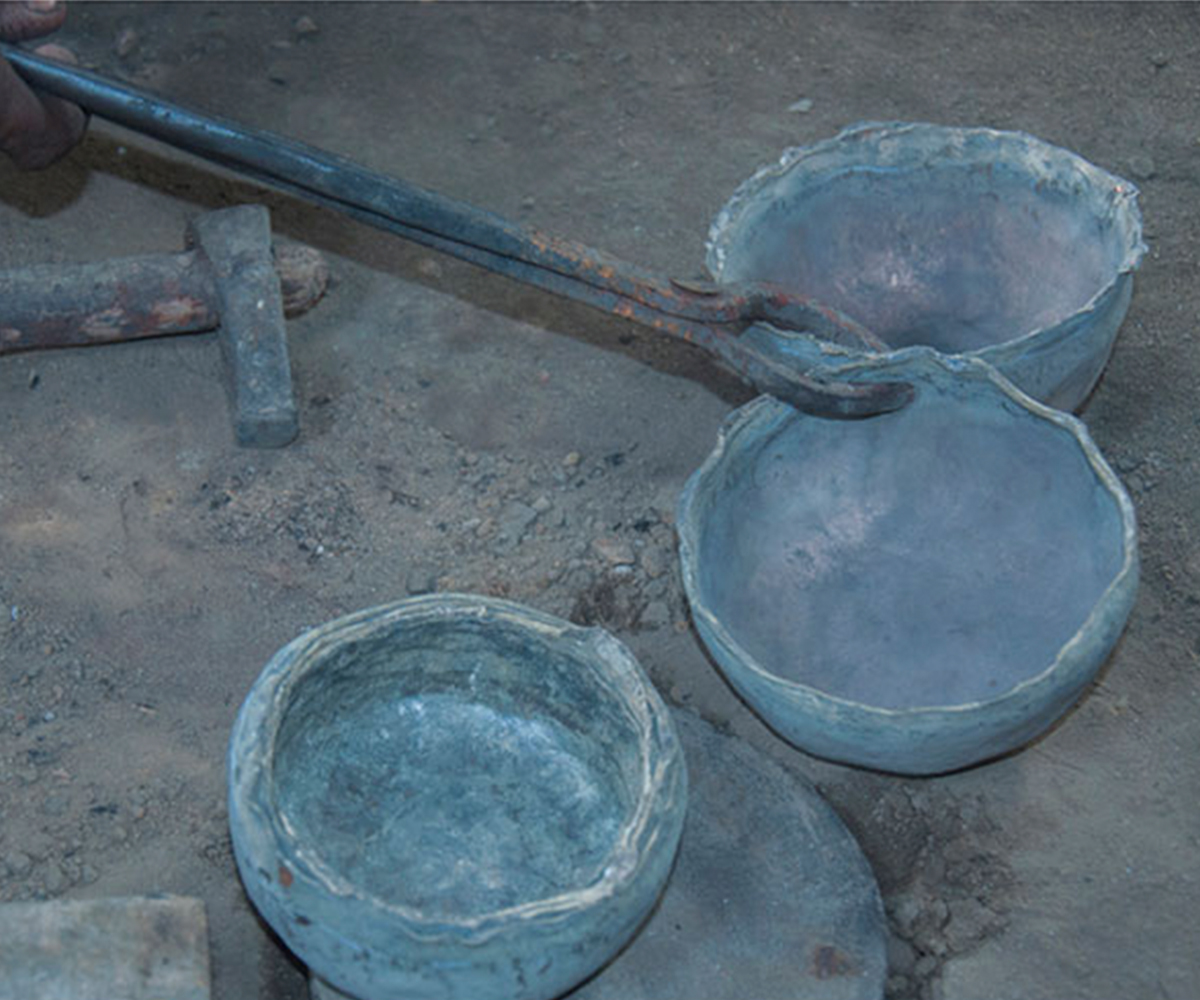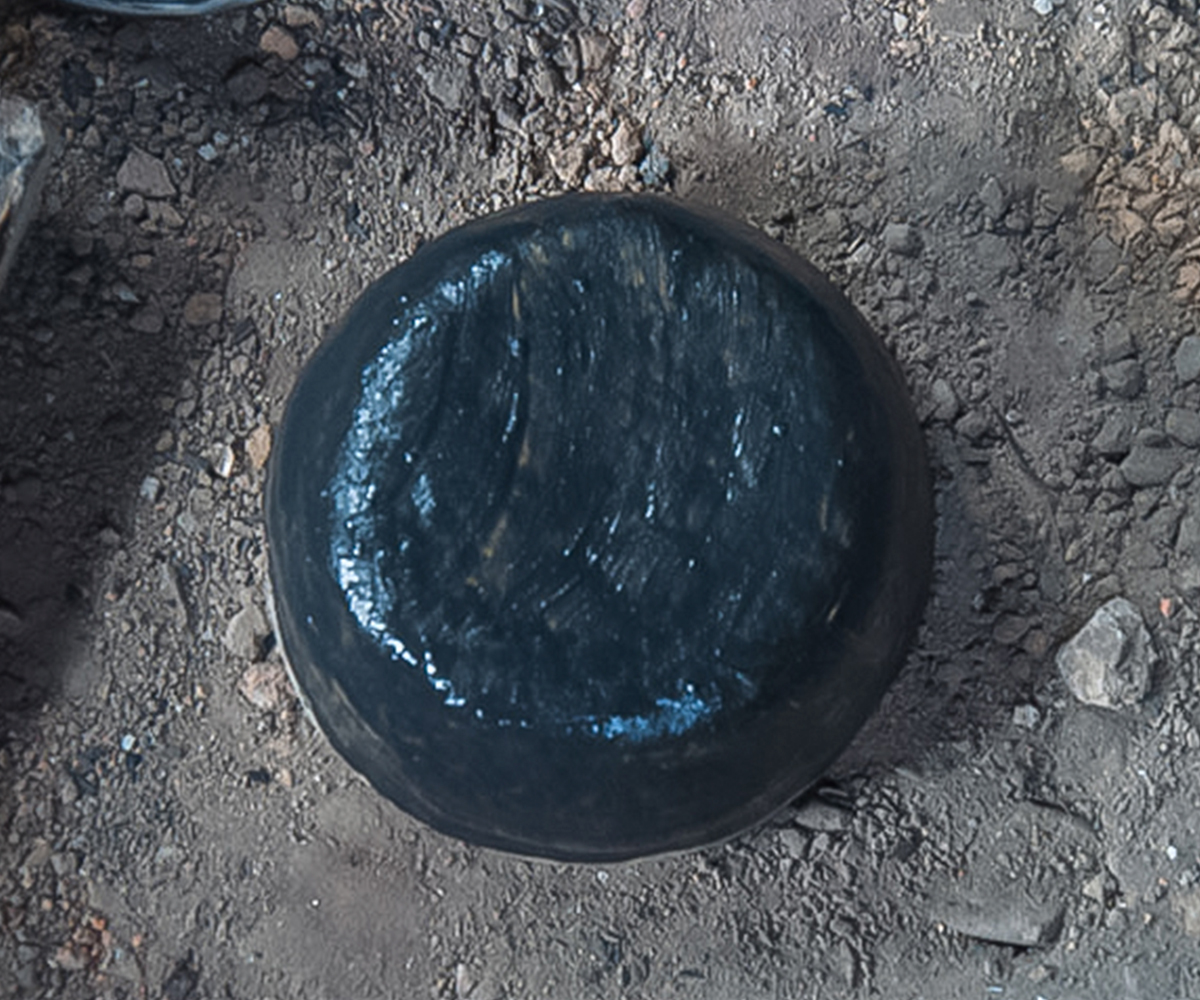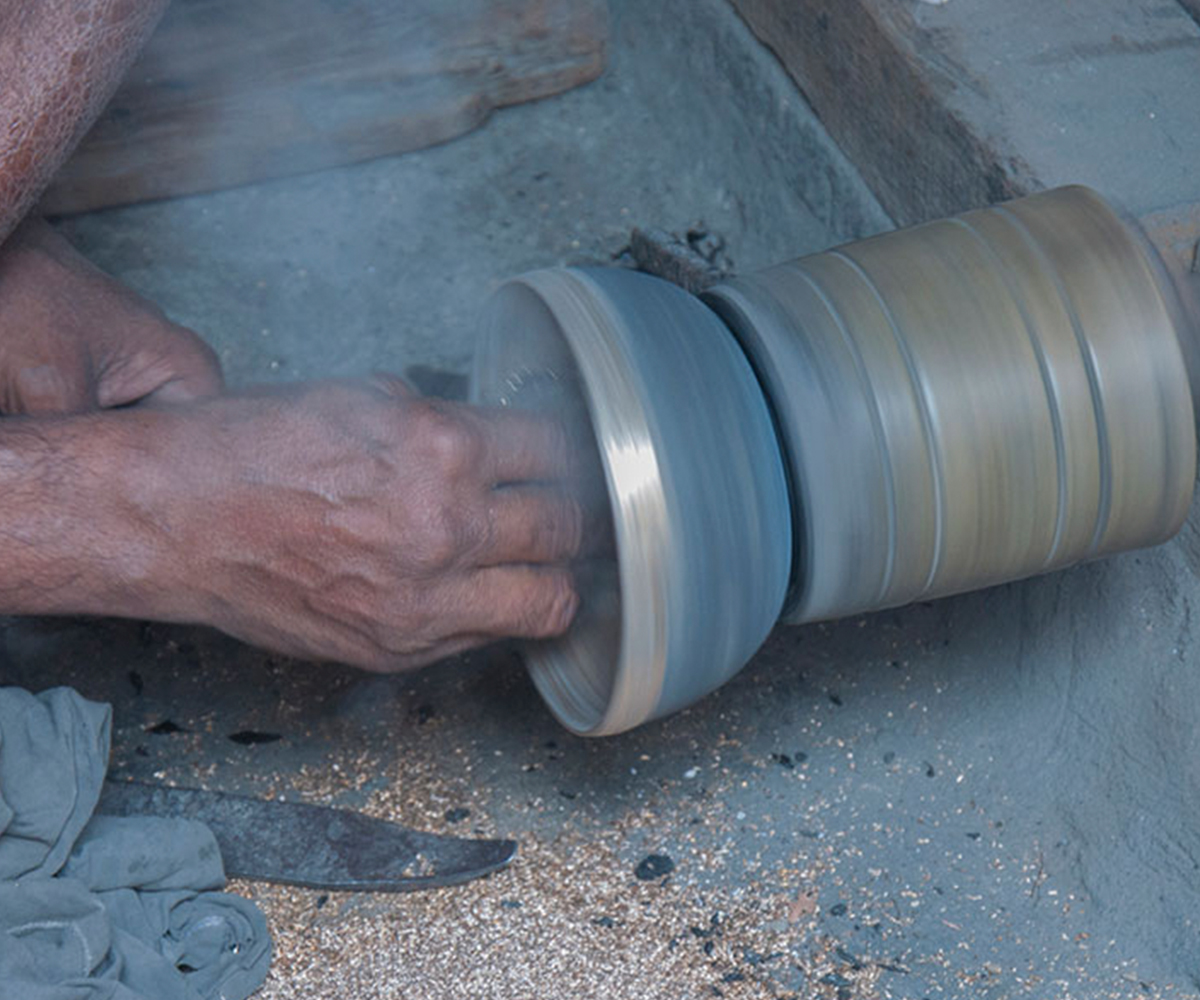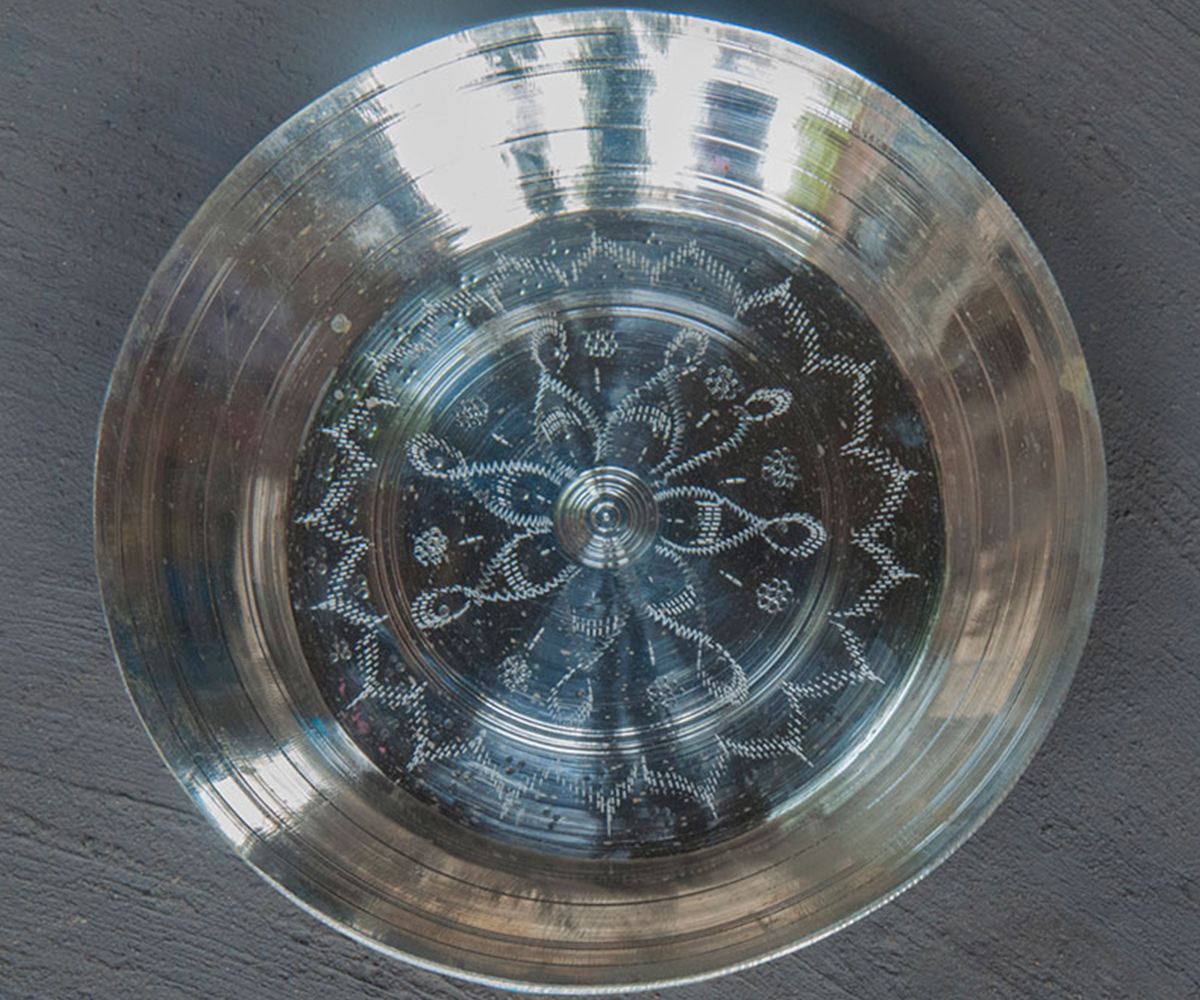ARTICLE
Kansari Brass and Bell Metal Ware
The craft has a long history in the region, and knowledge of the brass and bell metal alloys can be traced to the third millennium BCE. According to Ayurveda, these alloys of copper are considered to have medicinal properties and are thus regarded as ideal for making food utensils. Bell metal, characterised by its sonorous quality, is mentioned in the Rig Veda as being particularly pure, and desirable for ritual and sacred use. While the craft is believed to have originated around the eleventh century under the reign of the Eastern Ganga dynasty in present-day Odisha, it received an impetus around the fifteenth century as the Gajapati empire was gaining hold over the region. The Gajapati kings of the Suryavanshi dynasty are said to have invited Kansari artisans to Kantilo, Odisha, from what is believed to have been their original home in Kannauj in present-day Uttar Pradesh. Originally commissioned to produce bells, gongs, cymbals and other sacred objects for the Nilamadhav Temple in Kantilo, the Kansaris gradually spread across the region of present-day Odisha, expanding their craft to include utilitarian and ritual objects for household use. Depending on the region, the community is variously referred to in the state as Kansari, Thattari, Khadura, Kharada, Kansa-karigar or Kansya-kara.
Kitchenware made by the Kansari artisans includes trays and plates (thali and thalia), bowls (bela), water pots (lota and gara), cups and glasses (qina and gilasa) and ladles. Ceremonial items made for the home and temples include lamps (dibi and rukha), incense stands (dhupadani), seats for idols (khatuli) and small and big cymbals (ginni and tale). Despite the cultural prestige associated with them, the demand for these articles has been steadily declining with the mass production and easy availability of aluminium, steel and plastic goods. Coupled with a lack of appropriate marketing and obsolete production technologies, this has posed a threat to the craft’s sustainability. While many Kansari artisans have diversified into making decorative items, curios and jewellery, others have sought alternative employment.
In 2022, Odisha’s state handicraft department applied for a Geographical Indication tag for the state’s brass and bell metal crafts in order to protect their market and authenticity. The application is currently under review.
Bibliography
Behera, Manas Chandra. “A Study on Brass and Bell Metal Industries of Odisha.” Odisha Review (November 2017): 90–96. https://magazines.odisha.gov.in/Orissareview/2017/November/engpdf/90-96.pdf.
Nayak, Umesh Chandra. “Metal Bowl Makers (Kansari) in an Eastern Odisha.” International Journal of Current Research 10, no. 7 (July 2018): 71326–30. https://www.journalcra.com/sites/default/files/issue-pdf/31521.pdf.
Ranjan, Aditi, and M.P. Ranjan. Handmade in India: Crafts of India. New Delhi: Mapin, 2007.
Subramani, A. “Odisha’s Brass and Bell Metal Wares All Set to Get GI tag.” The Times of India, September 3, 2022. Accessed April 21, 2023. https://timesofindia.indiatimes.com/city/chennai/odishas-brass-and-bell-metal-wares-all-set-to-get-gi-tag/articleshow/93972992.cms.




